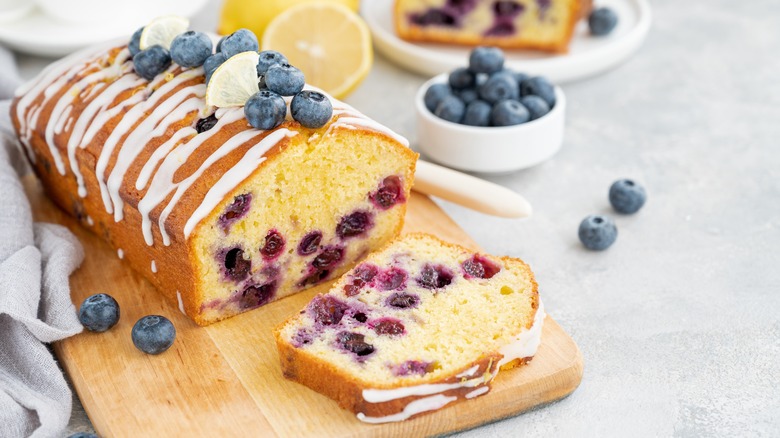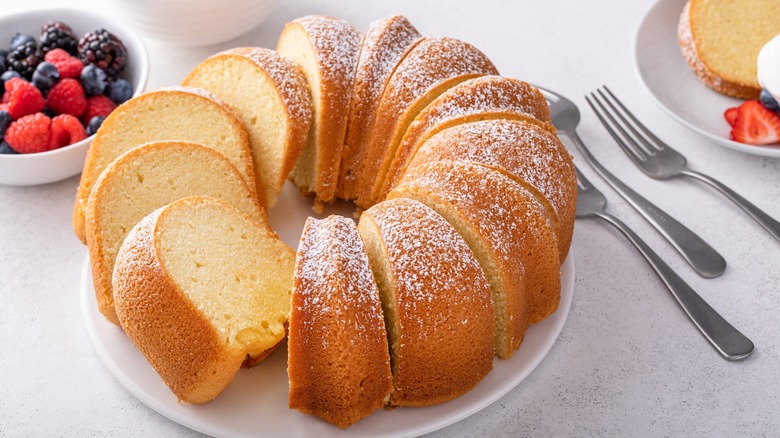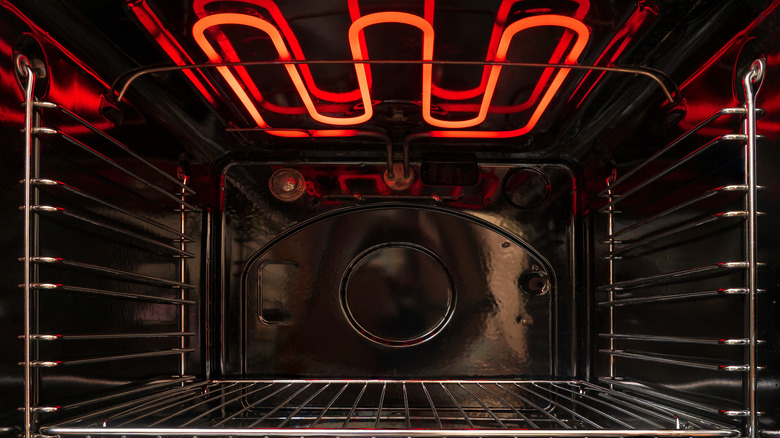For Fluffier Pound Cake Every Time, Don't Preheat Your Oven
The pound cake is a dessert that can do it all. It can be served simply with brunch or dressed up with decadent icings, toppings, and flavors to serve as a holiday showstopper at the end of a meal. Once you master the classic pound cake recipe, the world is your oyster.
According to the Smithsonian Magazine, this recipe has stood the test of time. It originally appeared in one of the first American cookbooks in the late 1700s. The well-documented origins of the name come from the fact that this recipe called for one pound of each of the four ingredients. Equal parts of butter, flour, sugar, and eggs were used in this original recipe to create a decadent and rich cake.
What's Cooking America claims that over the years this recipe was gradually made lighter to accommodate changing tastes. Leavening agents like baking powder and baking soda were invented and added in the 20th century to even further lighten the pound cake.
The pound cake has come a long way since its heavier origins, but you can take it a step further without affecting the flavor just by placing it in a cool oven.
Why pound cakes prefer a cold oven
Most recipes that make use of an oven as a heat source will call for you to preheat your oven. We've all been in a hurry though where we've questioned the supposed "necessity" of this step though. In the case of the pound cake though, you should always skip preheating the oven if you want the best results.
According to Southern Living, putting a pound cake in a cold oven is a trick that has been passed around for a long time. Doing so will supposedly create a golden caramelized crust, and a lighter, fluffier interior at the same time. The main reason for this is the added leavening agents. By allowing them to heat up progressively with the oven, these compounds have more time to work. The chemical reactions of baking powder or soda are increased along with the temperature. So, instead of having a shock of heat that sparks them into action, they get a slow progressive start before the dough begins to set.
Don't worry about this adding to your cooking time either. Imperial Sugar points out that pound cakes will always take a long time in the oven. The key here is to have patience and let the cake come together completely. Worrying about the extra 20 minutes it takes to heat the oven won't make a difference.
When should you preheat your oven?
While this is a great time saver for the forgetful baker in all of us, it is unfortunately the exception to the rule. The University of Illinois Extension says that most foods going in your oven depend on that initial temperature change. Egg-based dishes like soufflés and meringues are counting on that heat to get their signature lifts, so they need to go right in a hot oven.
Yeasted bread also requires that dramatic heat spike. The yeast reacts to the heat similarly to the other leavening agents, but because it is also a living organism it can't survive in these extreme temperatures, via Busby's Bakery. All of its lift comes in those first moments when the yeast cells are producing carbon dioxide gasses at a faster rate.
Cooking Light adds that vegetables and other charred, savory foods also require a preheated oven. Going into a hot oven helps speed up the process of caramelization that will create flavor in golden brown potatoes or crisp asparagus. Slow-cooking dishes, however, are fine to take their time heating up because they're going to be cooking for hours.
So, while your guests will thank you for approaching your pound cake with some patience, it's one of the rare occasions you should be doing so.


